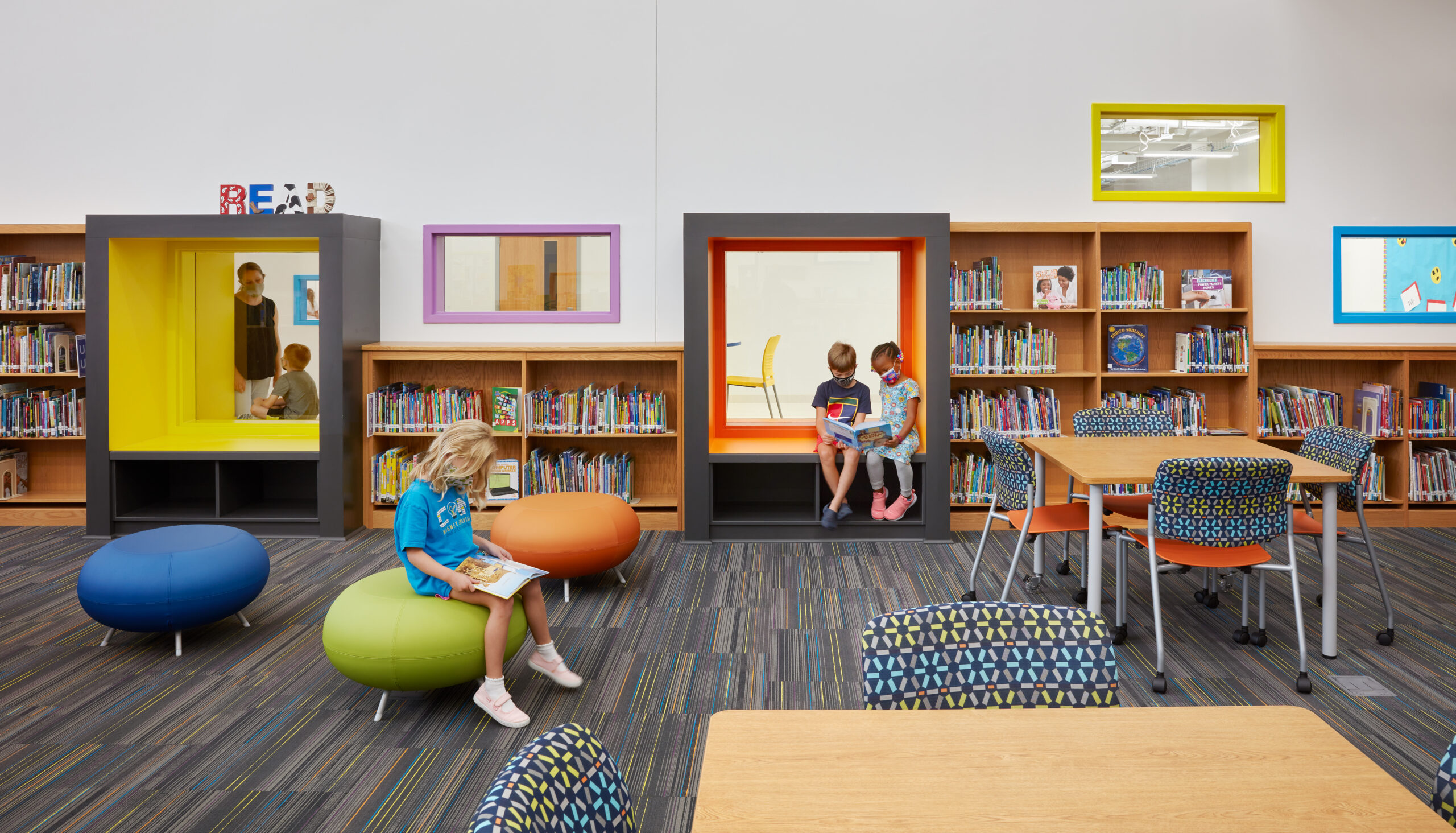
According to the Harvard School of Public Health, the average student spends more than 15,000 hours in school by the time they graduate high school, second only to the amount of time spent at home. This makes it critically important to design school buildings that support the physical and mental wellness of students and teachers.
Good indoor air quality, abundant natural light, biophilic design, and easy access to outdoor environments are examples of design considerations that promote wellness. By prioritizing what is best for building occupants, designers can develop school environments that strengthen the school community and put students in the best position to learn.
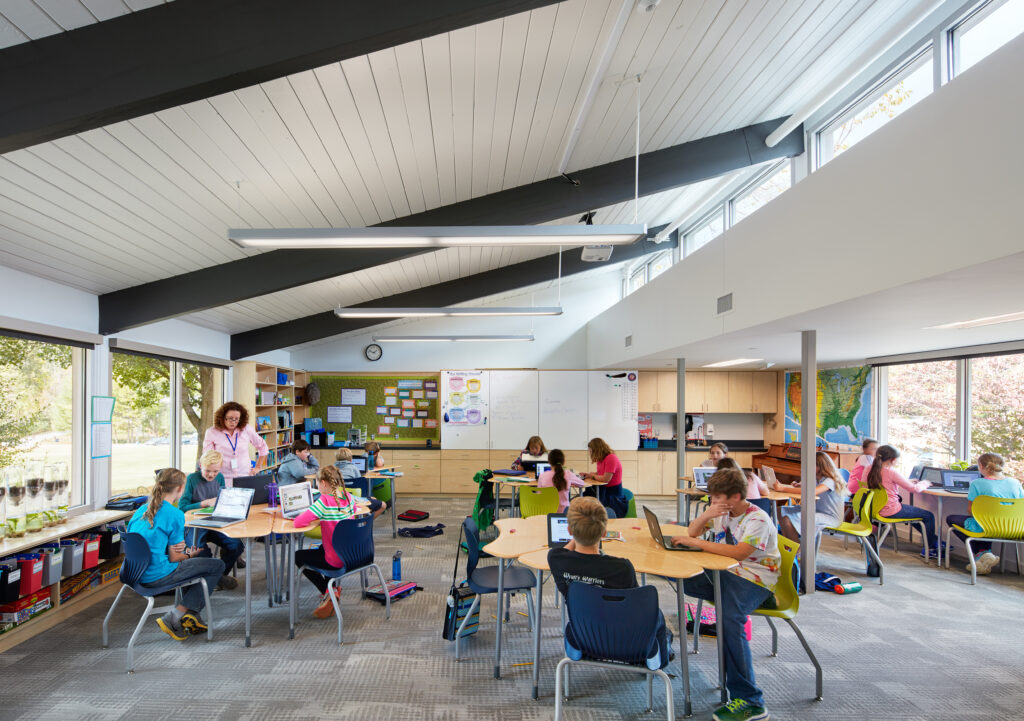
Research has advanced our understanding of how exposure to the natural world can improve our mental health and sharpen our cognition. In a school setting, integrating views to outside and access to natural light reduces stress, improves working memory, and improves attentional control. Interaction with nature can play a key role in supporting academic performance and wellness.
Controlling solar heat gain is also a priority for both thermal comfort and operational efficiency. Energy efficient thermal control methods such as sun shading and strategic window placement offer an additional means of regulating light and temperature, while reducing strain on HVAC systems.
The WELL Building Standard highlights movement as a central wellness concept, with the goal to encourage physical activity through building design. K-12 schools can promote movement through features like conveniently positioned staircases, circulation paths, and access to outdoor areas for walking or play. Intentional, supportive building components that compel students to move around throughout the school day add value and contribute to their well-being.
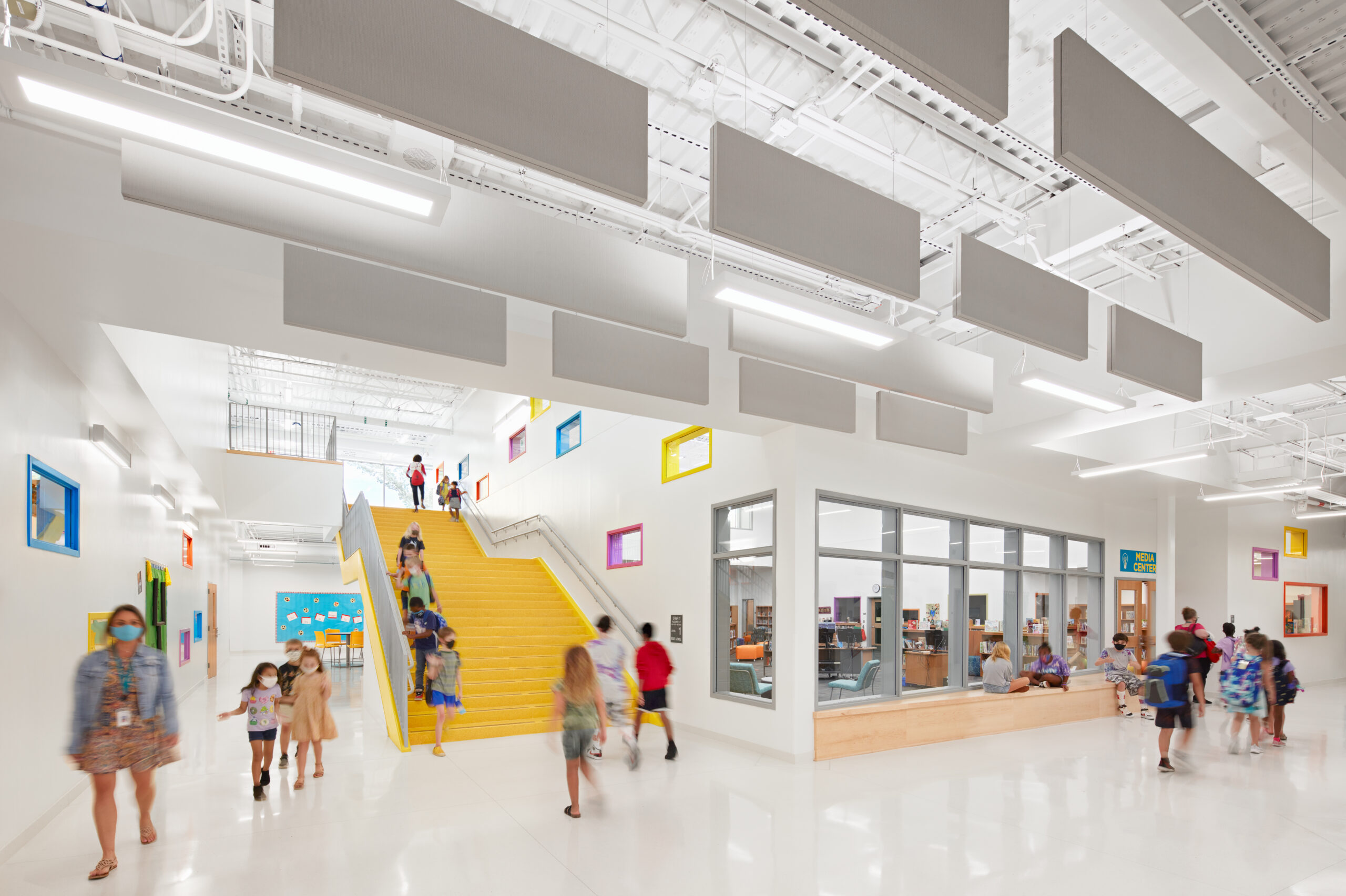

Selecting healthy materials and systems spans multiple wellness and sustainability objectives. Using wood beams instead of steel reduces a school’s carbon footprint and brings natural material into the environment, which reduces stress and anxiety. Biophilic design increases occupant connectivity to the natural environment, encompassing design strategies like natural materials, outside views, and outdoor spaces.
Despite the benefits, material and system specifications can be challenging for school systems to navigate. In many instances, improved material choices are relatively simple to incorporate, but there may be scenarios where the healthier material is more expensive. While healthier materials can be more costly up front, they are often less expensive over the life of the product. For example, vinyl composite tile (VCT) is inexpensive to install, but a slightly more expensive luxury vinyl tile (LVT) is a healthier material for indoor air quality than VCT. Because it requires significantly less maintenance, the break-even cost to install LVT typically occurs between 2.5 and 3 years.
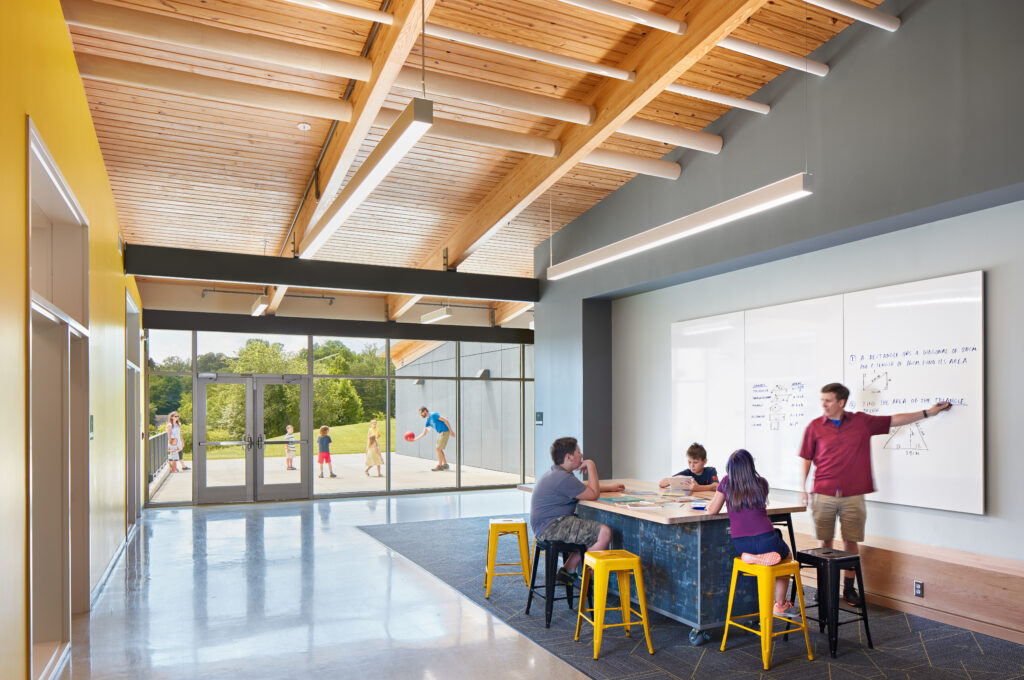
The pandemic also generated conversation around improving indoor air quality, increasing the ventilation and filtration of the inside air, and setting ideal humidity levels in HVAC systems. We use several resources to balance individual project or client requirements while considering human health and environmental impacts. Helping clients navigate these decisions is one of our most important roles in delivering an environment that meets all objectives.
Research at the K-12 level continues to indicate a positive correlation between outdoor spaces and academic performance, mood, and reduced stress and anxiety levels in students. Regular time spent outdoors contributes to better mental health and happiness, regardless of age, leaving no question that outdoor learning and play spaces are central to promoting wellness in schools.
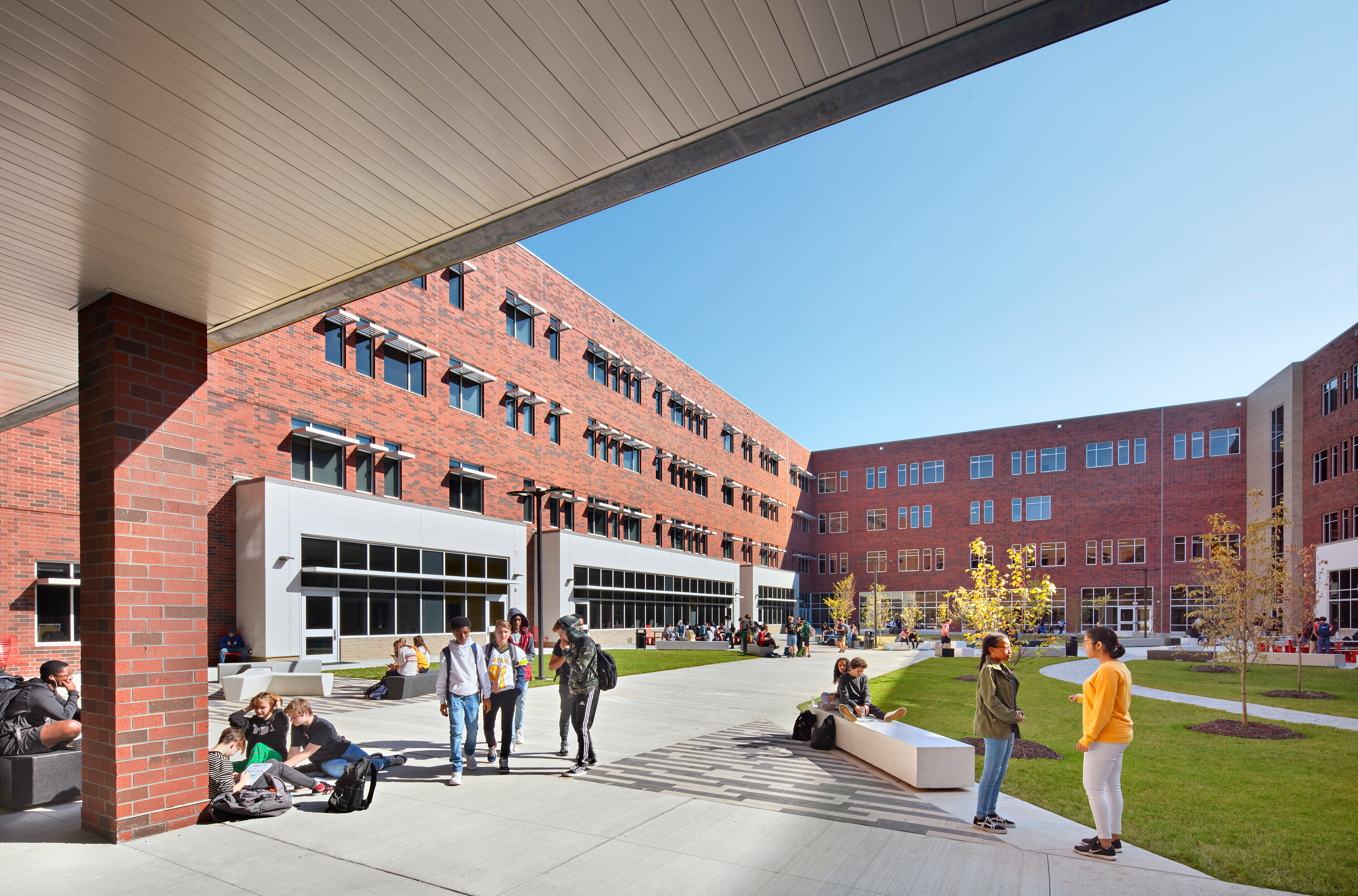

The pandemic has increased demand for outdoor learning spaces, which benefits student well-being on multiple levels – time spent in nature, physical activity, and providing a different learning setting. By designing learning spaces with convenient access, outdoor areas can become an extension of the indoor classroom with the potential to enrich learning experiences, provide space for breakout activities and accommodate project-based learning.
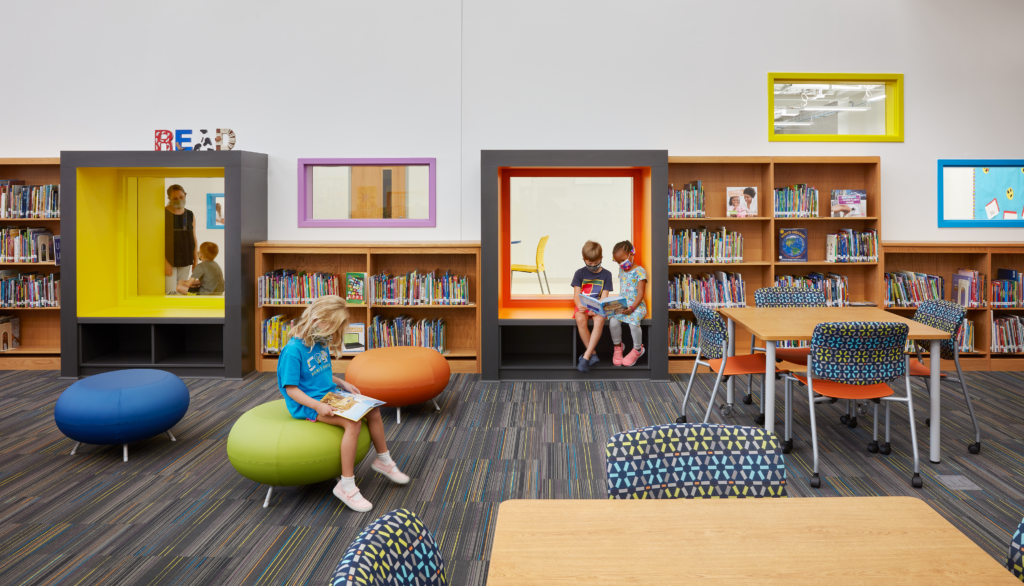
Strengthening the sense of community among students and teachers supports social/emotional well-being and translates to a more conducive learning environment. Incorporating collaboration zones, flexible furniture, and opportunities for students to actively engage with their learning environment promotes both community and student agency. In addition to collaboration spaces, it is important to prioritize quiet or individual spaces for different styles of learning. By designing a variety of space types for gathering and for quiet, we can develop inclusive environments that meet the needs of all students.
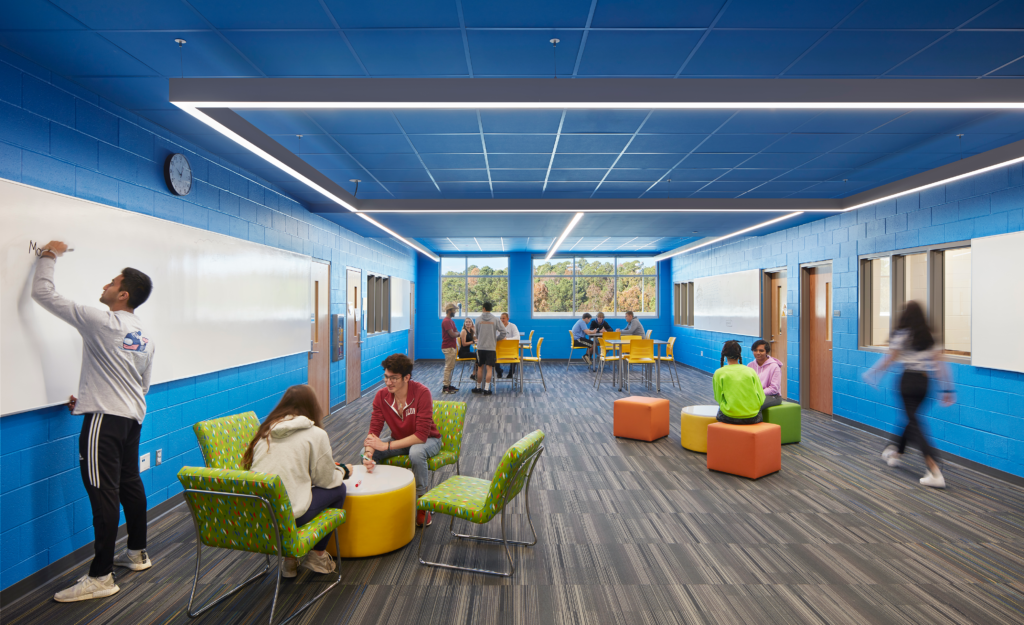
As evidenced by research and real-world examples, there is growing recognition that student learning and well-being is closely tied to their learning environment. A human-centered, holistic approach to design will improve the learning environment for generations to come.
About the Authors
Submitted by Aaron Brumo, AIA, LEED AP BD+C and Julie Leary, AIA, LEED AP, WELL AP
